ZTT records was established in 1983 by record producer Trevor Horn, businesswoman Jill Sinclair (Horn’s wife), and NME music journalist Paul Morley. In many ways the partnership between Horn and Morley was an unlikely one, with Horn’s early ’80s projects with Buggles and Dollar not the sort of acts that Morley would have lauded in the music press. There was no doubting Horn’s prowess in the studio, however, with ABC’s 1982 smash-hit The Lexicon of Love testifying as much.
The first signings for the new label would be crucial in establishing its ethos. Legend has it that Propaganda only had three songs to their name when Morley was introduced to their music by NME colleague Chris Bohn (aka Biba Kopf) and became intrigued as to what they might offer the new imprint. One of the said tracks was a German-language interpretation of Throbbing Gristle’s ‘Discipline’, which could hardly be considered material destined to take the charts by storm. The band was a trio at this point comprising Ralf Dörper, Andreas Thein and Susanne Freytag – incanting vocalist in this initial line-up – who reflects: ‘Paul liked the music, but it was also the combination of the name, the weird Germans and the really hard beat.’ Called to the studio in London, there was a need to recruit a singer and fast, so Susanne’s friend Claudia Brücken – then still at art school – joined the ranks.
Morley recalled: ‘Having made my mind up very early on that I wanted Zang Tuum Tumb to be more European than American, and arbitrarily fancying the idea of a group from the home city of Kraftwerk, and the idea of connecting the label to a then relatively new but already deep and fascinating history of techno/electro/industrial music, and thinking their name was perfect, in all sorts of ways, for a group…they were the first group I wanted to sign… I thought that they were a very interesting way of establishing much of the intended avant pop identity of the label, and a way of very quickly opposing the Buggle-gum type image of Trevor and the possibility that it was going to be merely some kind of production company churning out sugary pop product.’ (2010)
A band from overseas was considered a risky first pick for the London-based label and it wasn’t until Frankie Goes to Hollywood had been secured for the roster that Propaganda were signed up, joining Art of Noise in the ZTT camp. ‘Dr. Mabuse’ was their debut single release in 1984, a track given the full Trevor Horn production treatment. ‘I got Anton Corbijn who I worked closely with at the NME to do the video for ‘Mabuse’ – his first real pop video, and also to take their photographs and make a painting for every track they recorded,’ remembered Morley. ‘This was, of course, before his collaborations with U2 and Depeche Mode, and was an absolutely integral part of creating the image of the group: enigmatically glamorous, art but still pop, mysterious but right in front of your eyes, and full of its very own intense style.’ Corbijn’s next video would be for David Sylvian’s ‘Red Guitar’, both being black and white productions. The choice was quite deliberate for Propaganda. ‘In reality this was a very important statement to make,’ Morley continued. ‘At a time when the world was exploding into slick MTV colour and everyone was going crazy for the multi coloured superficial, we stood firm in the shadows, and even to some extent pulled Trevor Horn into the shadows, where I personally felt he was going to be more amazing as a producer…
‘I wasn’t necessarily being wilfuly opaque…Anton’s ideas about presence, shade and image, and pop as an explosive, intelligent secret, have proved to be not completely poisonous to success.’ (2010)
The period leading up to the ultimate release of A Secret Wish as the band’s first LP was hectic. Original member Andreas Thein left the band with artistic differences cited. Michael Mertens had already been added to the line-up bringing experience as a musician from a classical background. The development of material was undertaken cross-continent, with Dörper, Mertens and Freytag based in Germany and Brücken in London. Paul Morley was revelling in a role as creative protaganist. ‘It seemed very natural, this way of working – of advising, suggesting, framing, as though it was a legitimate collaboration, something that was clearly working…I was just interested in the group as a surreal pop object with a soundtrack that developed from a Kraftwerk point of view musical ideas I had liked in Simple Minds, Associates, Japan, DAF, Vince Clarke, Grace, Cabaret Voltaire, ABC…’ Brücken and Morley would marry in early 1985.
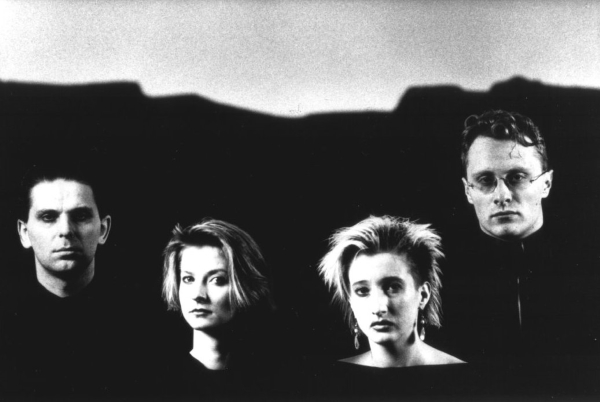
Frankie Goes to Hollywood took off exponentially and it was evident that Horn would not have the bandwidth to produce Propaganda as well. Morley continues: ‘When Trevor pulled out of producing them any more, figuring it was going to take too much out of him to do ten ‘Mabuses’, especially as ‘Mabuse’ itself had turned into ten ‘Mabuses’, I actually asked David Sylvian to produce them…but he decided against…and it stayed within the Sarm pop factory. Actually, another sign of the split between sensibilities at the label: I asked David Sylvian, and Jill approached Stock Aitken and Waterman. One side of ZTT was seeing them as a sort of Dollar (a Deutsche Mark) and the other side was seeing them as a sort of supremely eerie avant-pop ensemble.’ (2010)
Sylvian may not have taken on the entire project, but he did work on some of the material. Paul Morley again: ‘When I first heard the demo of ‘Duel’ on cassette fresh in from Düsseldorf I thought, “Well, that’s a great pop song.” And it had a countdown. But as well as a pop song with melody there was also mystery and menace and some mania and melodrama, which was just my sort of pop song and exactly the sort of zangy subversive pop song I wanted on the Zang Tuum Tumb label.
‘David Sylvian treated it first of all and it still sounded like a great pop song but one that was too tender and beautiful to live, his version existing quietly and eternally in the shadows. Producer Steve Lipson gave it the confidence to come out of the shadows, and so much confidence that it was an actual hit and Propaganda appeared on Top of the Pops.’
Despite the many mixes of ‘Duel’ to be released over the years, Sylvian’s edit – described by Morley as a ‘gorgeous watery slowed down version’ – has never appeared.
The chosen producer – Trevor Horn’s assistant Lipson – didn’t find the track an easy one to work on: ‘‘Duel’, surprisingly in retrospect, wasn’t a favourite of mine during the making of A Secret Wish. I knew it was going to be a single but I never felt I managed to give it the drama it needed. Maybe that was because it felt more like a “pop song” than anything else on the album. Or maybe it was the smoothness it required. Hard to know, but for me it never really jumped out of the speakers. It seems it turned out well enough in spite of my frustration, and to this day I have no idea what could have been done differently.’
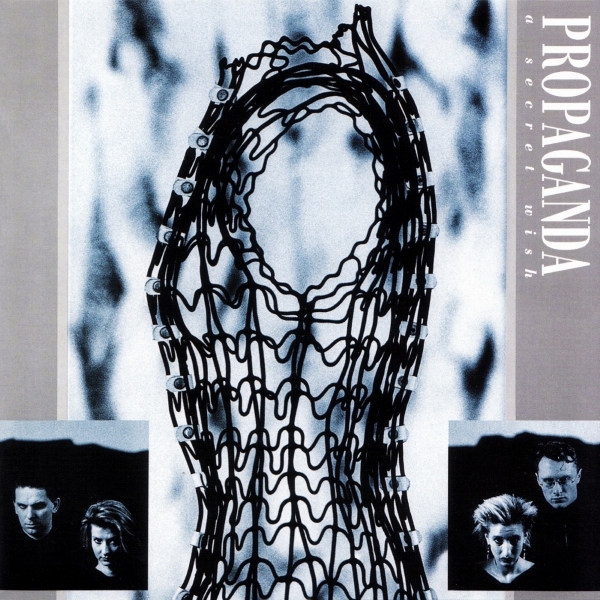
Sylvian did have a significant impact on the track that would become the follow-up single to ‘Duel’. ‘When we went into the studio to work on ‘p:Machinery’ it wasn’t a fully developed song,’ says Claudia Brücken. ‘There were different parts and sections, sequences and rhythmic patterns. We had asked David Sylvian for his input. When he came to the studio he brought his own little set-up with him. He said that he’d been working on an idea, pressed a button and out of his machines came this alluring music, which became the verse of the song. I sat on a sofa at the back of the studio watching Stephen recording what David had done, thinking: “Oh wow, this is really special and it’s sounding just so right for the song.”’
In 2001, a limited edition cd was released under the name M: and entitled The Secret Tapes of Dr. Mabuse. Here, alongside a couple of demo takes of that Throbbing Gristle track, is ‘Sylvian’s Machine’, an early demo version of ‘p:Machinery’ where Sylvian plays what Paul Morley christened his ‘ghostly top line’.
Ralf Dörper explains what we are hearing: ‘A first proper version of ‘p:Machinery’ was done in Düsseldorf by Michael Mertens – while in London Trevor Horn struggled with ‘Duel’. That version of ‘p:Machinery’ was taken to London but deemed to function only in parts. It was the initiative of Morley to give the track to David Sylvian who added some magnificent (in my opinion) keyboard lines. These were kept and elaborated on during the production process which concentrated then on ‘Duel’ first…Andreas had captured and kept that snippet of the Sylvian session which was an add-on on the basic Düsseldorf track.’
The track onto which Sylvian overlaid his work had been recorded in Germany, Ralf adds, ‘around the time when we finally got an advance (not from ZTT but from [music publishers] Perfect Songs) which enabled us to buy some equipment… i.e. PPG-System and LinnDrum.’
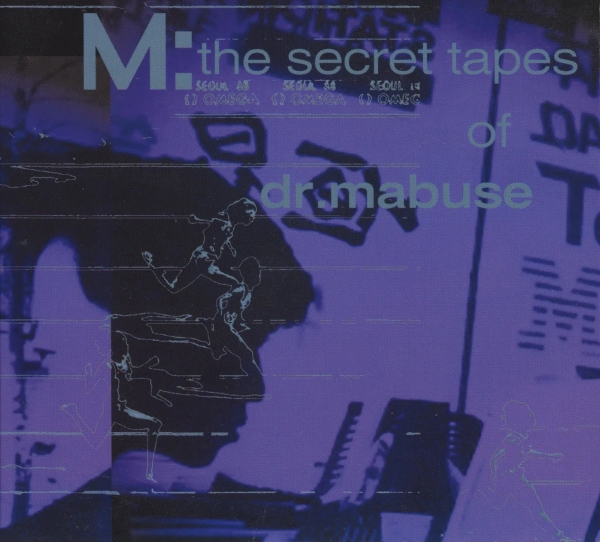
Whilst the song continued its development, Sylvian’s influence on the final outcome was acknowledged by those involved. Stephen Lipson: ‘I always felt that one of the main key elements in ‘p:Machinery’ was the brass line. Andy Richards and I agonised for days on it. We wanted it to sound synthetic yet heraldic at the same time. It contrasts very nicely with David Sylvian’s delicate melody which led so well into the underlying threat of the verses. And as always Claudia and Susanne delivered the overall atmosphere so brilliantly.’
For Claudia, Sylvian’s participation reflected the artistic crucible in which the album was created. ‘The creative process of recording A Secret Wish was incredible to say the least. As nearly all of the recordings took place in Sarm West and ZTT’s offices were in the same building, there was a constant flow of artists and bands and creative people coming and going and I had the pleasure to mix and mingle with some wonderful people (a great creative fusion).
‘David Sylvian helped us with his writing and musical skills on ‘p:Machinery’, pretty much influencing the final structure and atmosphere of the piece – a hint of what might have been if he had produced the album, which, for about a second, he considered, after Paul Morley, who was really our A&R man, panicked for a moment that Steve Lipson was going to make it too Genesis. One of my favourite memories of David is from Cologne, where we both met up with Holger Czukay at his local café. Later that afternoon Holger chauffeured us in his old Mercedes through the city for a special sightseeing tour.’ (2017)
Susanne: ‘What a huge excitement it was to meet David Sylvian in the studio. I’d had a crush on him since I first heard his Brilliant Trees.’
Claudia: ‘We were real admirers of him and his work but we weren’t star struck or anything, we took it in our stride…’
Susanne: ‘…I loved Japan so I think I was a little bit!’
Ralf Dörper reflects on a brief but nevertheless significant contribution. ‘Sylvian was just involved for a rather short period of time, i.e. not during the Trevor Horn phase at all – but later during ‘p:Machinery’…yes, a writing credit for Sylvian could have been ok. But it was communicated to us (by Jill) that he waived it.’
The final cut of ‘p:Machinery’ was considered a triumph. ‘Stephen’s production and musical interpretation of Ralf’s visionary, dystopian lyric was an inspired combination,’ says Claudia. ‘I love the triumphant brass section in particular and that mad bit just before the end chorus when the music vanishes into nothing…’ ‘That part took days of work,’ Lipson recalls. ‘I had the idea of making the song go into outer space. Must have been the drugs. The technology just wasn’t there so I had to do each element by hand with, if I remember correctly, an AMS delay unit, pressing buttons whilst recording the results. Each element took hours of patient trial and error. Strange to think that now I could do the same thing in a couple of minutes…’
Sylvian was specifically credited on the 7″ for his work on the song. Multiple remixes were a core part of the label ethos with Sylvian again mentioned on the 12″ featuring the nine-minute-plus ‘p:Machinery (Polish)’.
Before the single was released in August 1985, the band played at a ZTT live showcase and there was a familiar face behind the drum-kit. Paul Morley: ‘I loved the Steve [Lipson] Propaganda sound but I didn’t want to lose sight of another Propaganda sound, one that you could play alongside The Creatures, the Cocteau Twins and Echo And The Bunnymen. Hiring Steve Jansen of Japan and Derek Forbes of Simple Minds to play live with them was also my way of highlighting where I felt the group belonged in pop history.’
The single sleeve-art for ‘p:Machinery’ was also the brain-child of Morley who had assumed a role as ‘controlling designer’, later reflecting, ‘I had made a decision early on that all ZTT sleeves were my area and that this was where I got the chance to express my ideas visually and conceptually about the label and the groups on the label, which just goes to show that I was used to operating as a writer, and not necessarily as a record company executive. I thought that groups would be chuffed that on their sleeves there was such provocation and information and random references to other forms of creative enterprise. I was, effectively, wrong.’ (2010)
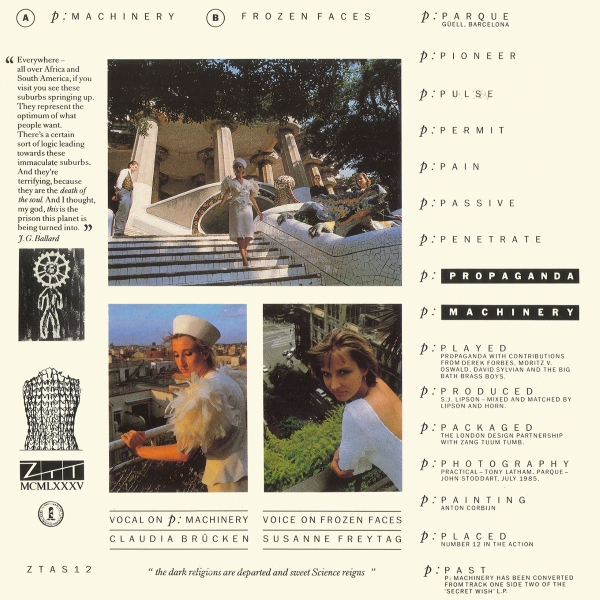
Anton Corbijn’s painting of a human figure, its head replaced by the cog from a machine, sits beneath a quote from J.G. Ballard bemoaning man’s satisfaction with a life in the suburbs and the subsequent ‘death of the soul’. (An alternative J.G. Ballard quotation selected by Morley for the 12″ caused much controversy given the empathy expressed with the militant Baader-Meinhof group). The chess pawn on the front of the 7″ sleeve reinforced the theme of citizens belittled. Claudia: ‘One of the UK music weeklies had called us “the children of Fritz Lang” and I thought that was a fitting description. I always liked Anton Corbijn’s painting for ‘p:Machinery’ in particular – a sketched figure with a cog for a head. For me it sums up the essence of the song and it makes me think of Marie in Fritz Lang’s Metropolis – that is the imagery that pops into my mind every time we perform the song.’
Corbijn’s painting is reminiscent of the pictures in the seaside hut in the video he directed for David Sylvian’s ‘The Ink in the Well’, surely indicating that these were also from his own hand. When I listen to A Secret Wish, I always think of that video, Propaganda’s opening track being ‘Dream Within a Dream’ which features Susanne Freytag reciting the poem of this title by nineteenth century American writer Edgar Allan Poe. Just as Paul Morley gathered quotes from various writers for the video for ‘The Ink in the Well’, so he selected the text for ‘A Dream Within a Dream’ (first published 1849).
‘I love the opening track especially,’ says Claudia, ‘as it set up the record, and also defined the group and our idea of the fantastic, introduced the sound and mood of the group as a combination of the gothic and the contemporary. It struck me as so daring and free spirited at the time to start an album with a poem, with something from the 19th century, and also with a very slow building piece of music, like it was the beginning of a film, a theatrical piece. We were setting out on an adventure with Edgar Allan Poe, something timeless and forbidding, and who knew where it would lead.
‘The track keeps slowly revealing itself, emerging from the shadows, shadowing itself, taking us on a spell binding and exhilarating journey, transporting us into a different world altogether, deep into the album itself. You cannot imagine the sublime words being spoken by anyone else but Susanne, who delivered the poem so beautifully, and I loved the idea that in fact Poe became one of our collaborators, a part of the elusive shadow ensemble that helped make Propaganda what they were.’
‘p:Machinery’
Propaganda – Claudia Brücken, Ralf Dörper, Susanne Freytag, Michael Mertens with contributions from Derek Forbes, Moritz V. Oswald, David Sylvian and The Big Bath Brass Boys
Music by Michael Mertens. Lyrics by Ralf Dörper. With additional music by Claudia Brücken & Susanne Freytag.
Produced by Stephen Lipson. From A Secret Wish, ZTT, 1985
Download links: ‘Dream Within a Dream’ (Apple),’p:Machinery’ (Apple)’ ‘Duel’ (Apple), ‘p:Machinery (Polish)’ (Apple)
Physical media links: A Secret Wish (Amazon)
All artist quotes are from interviews in 2021/22 unless otherwise indicated. Full sources and acknowledgements for this article can be found here.
‘The opportunity that we had been given – to work with Trevor and Stephen with all this talent around us – I knew that something very special would happen, that was pretty clear. And it was fun, we were just given all of these tools, it was a complete experimental playground, where all these people were just kind of thrown together to see what we came up with and that was a great experiment…I think that I knew that something special was happening when we met Paul Morley…we were on the same wavelength, and all the quotes he used on the releases, and all the references he made, to Futurism and the Futurist Manifesto, we could relate to that.’ Claudia Brücken (2010)
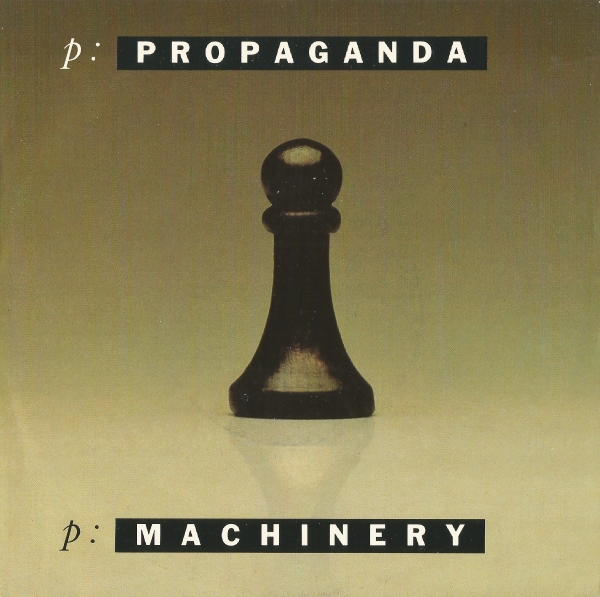
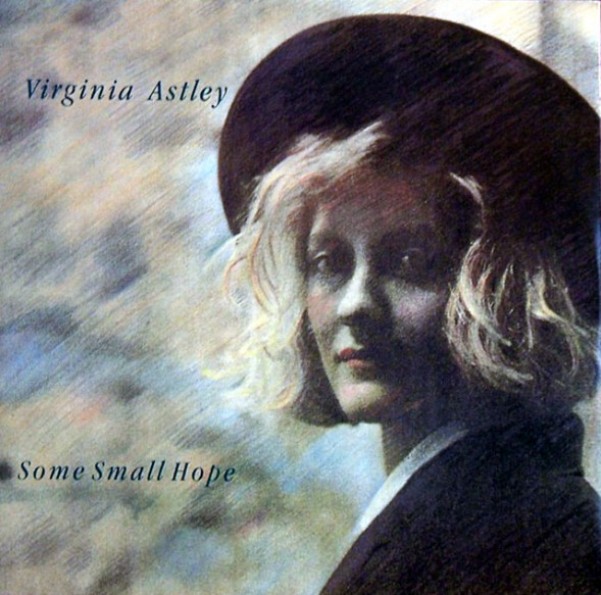
Thanks VB, this was interesting. I remember Propaganda. Had no idea of the Sylvian involvement. Liked the 38 second ‘Sylvian’s Machine’ demo and the use of the synthesizer, in this way, is ‘where 1980-1985, in particular, was at, musically in the popular field’ (this reminds me – we are massively looking forward to seeing/hearing Howard Jones in October – me for the first time).
It also shows Sylvian versatility and reveals some of the German connections, for him. Since 1983, I have been into the Bauhaus (architecture, art, crafts and yes, music) school. I am a huge fan of its founder and first director, Walter Gropius (1883-1969). As a journalist within popular music, Paul Morley, is also influential and ‘of my own era’. Reading this was a nice early part of the weekend. Enjoy all…
LikeLiked by 1 person
I adored A Secret Wish, the production was (and still is) outstanding. They really were pushing the boundaries with studio technology at the time. P-Machinery and Duel, in all their guises are wonderful to listen to on headphones and i have spent some wonderful journeys spent lost in them. I always knew that Sylvian had some input but it is only as last few years that i got to hear exactly what. It is perfect, it is almost as though the song was built around his contribution. I have never known him to comment on this piece of his work, i wonder why!!! Thank you for another wonderful article.
LikeLiked by 1 person
Exactly the same thoughts as above.
By the way, the title for the photo of Propaganda should read:
Propaganda, photograph by Anton Corbijn from A Secret Wish – Michael Mertens, Susanne Freytag, Claudia Brücken, Ralf Dörper.
LikeLiked by 1 person
Now fixed – thanks
LikeLike
Claudia Brücken on David Sylvian: ‘his contribution to p:Machinery is so beautiful. You can really hear that it’s David language…’ from Putting the X back in Propaganda by Daryl Easlea, Prog magazine, 2022
LikeLike
Your reaction to Brilliant Trees sounds similar to my reaction on hearing A Secret Wish. Utterly groundbreaking. The sleeve liner mentions David’s involvement, I think as part of some description as “The Wall of Sound” (?), with Glenn Gregory of Heaven 17 fame. To find out today, from this article, that David Sylvian had such an input and wrote one of the key aspects of one of the key tracks from the album… is mind-blowing for me. Thank you!!
LikeLiked by 1 person